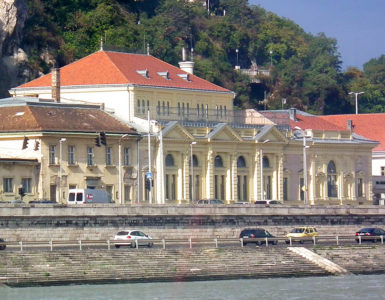On our last day in Dublin, I make a point to see the Book of Kells. Dating to 800 CE, this illuminated manuscript, containing the four Gospels, is the oldest book in the world.
The book is kept in sealed display case at Dublin’s Trinity College. We enter through the stone gate, bypass the bright young student selling tours, and follow the signs to the Book of Kells exhibit. Having learned a lesson from the designers of Disney World, the keepers of the book force all visitors to enter and exit through the Book of Kells Gift Shop. There, in addition to books about The Book, pilgrims can peruse everything from Book of Kells keychains to Book of Kells coffee mugs.
These retail opportunities are wasted on me. I walk past the Book of Kells hats and sweatshirts, plunk down my twelve euro, and make my way into the display hall.
Here, the aura of commercialism gives way to a more appropriate air of sobriety. The walls of this dark room are covered with enlarged pages from The Book, highlighting the precision and intricacy of its contents. There were at least three scribes involved in the book’s production: two who labored over line after line of practical black script, and another with a passion for colored inks. They etched their work on page after page of vellum — thin leaves of calf skin — bound into a book that, when closed, looks all the world like a battered, ancient ledger. (The golden, jewel-encrusted cover was stolen long ago.)
After browsing other ancient books, including three or four “portable Gospels” designed to fit into leather satchels, I climb the stairs to the darkened sepulcher where the Book of Kells lies in repose. The Book itself is secured in a tomb of steel and glass. Today, its pages are open to a passage from Luke.
The characters are written in a careful, deliberate script, but there is nothing mechanical about the result. Initial letters in key paragraphs sprout unexpected whorls of color. From these colorful vines of ink hang circles containing three other circles — testimonies to the Trinity — and myriad other near-microscopic decorations, from Celtic knots to hypnotic spirals.
The other page portrays an elaborate rendering of the Four Evangelists. For anyone familiar with Christian myth, religious art, or Tarot, this mute page speaks volumes. Other pages contain larger graphics and more intricate patterns; the closer you look, the more you begin to see that each image is composed of many other smaller, more delicate ones. Under scrutiny, the page expands and an entire world of symbols unfolds. I could explore these patterns for hours, getting lost in an intricate maze of shapes and subtle meanings.
But the hour is late, and the press of other visitors does not encourage extended study. Reluctantly, I rejoin Clyde and take the stairs to the exit.
What happens next stuns us both. The stairs lead to a library unlike any we have ever seen: the aptly-named “Long Room.” This hall — as long and lofty as an IKEA furniture warehouse — is a full 65 meters (about 195 feet) long. Sharply vertical bookshelves, each so tall they can only be approached via a network of rolling ladders and wrought-iron staircases, contain more than 200,000 ancient books.
Our jaws drop. Because we have only seen spaces like these in Harry Potter movies, our brains insist the Long Room must be some sort of clever special effect: a hologram, a matte painting, a digital fantasy. Its sheer immensity defies reason; the eye refuses the reality of it.
By the time we walk the length of the room and descend the stairs to the gift shop, I feel a bit like Alice in the Lewis Carroll books, who complained, “It was much pleasanter at home, when one wasn’t always growing larger and smaller.” In seconds, I’ve gone from being lost in the microscopic raptures of the Book of Kells to feeling dwarfed by the largest library I’ve ever seen — from admiring the miniscule, to being made to feel miniscule, myself.
As humans, we need more experiences like these: objects and places deliberately constructed to remind us that entire worlds can be compressed into the smallest of spaces … and that own personal world is just one tiny element in a design too immense for human eyes to comprehend.




Beautiful!Maybe I’m prejudiced by my own work of painting with tiny letters from the original Bible texts for every stroke. It’s a new art movement called UnGraven Image.Especially appreciated the line,”…just one tiny element is a design too immense for human eyes to comprehend.” My slogan is “Changing the way we see the world one painting at a time.”Than’s for the beautiful blog.Please check out my blog & site as I believe we may be soul buddies, http://www.ungravenimage.comMay you be a blessing and be blessed,Judy Rey WassermanFounder & ArtistUnGraven ImageP.S. _I lived in Orlando for a while and how could you pass up a Book of Kells keychain!? LOL